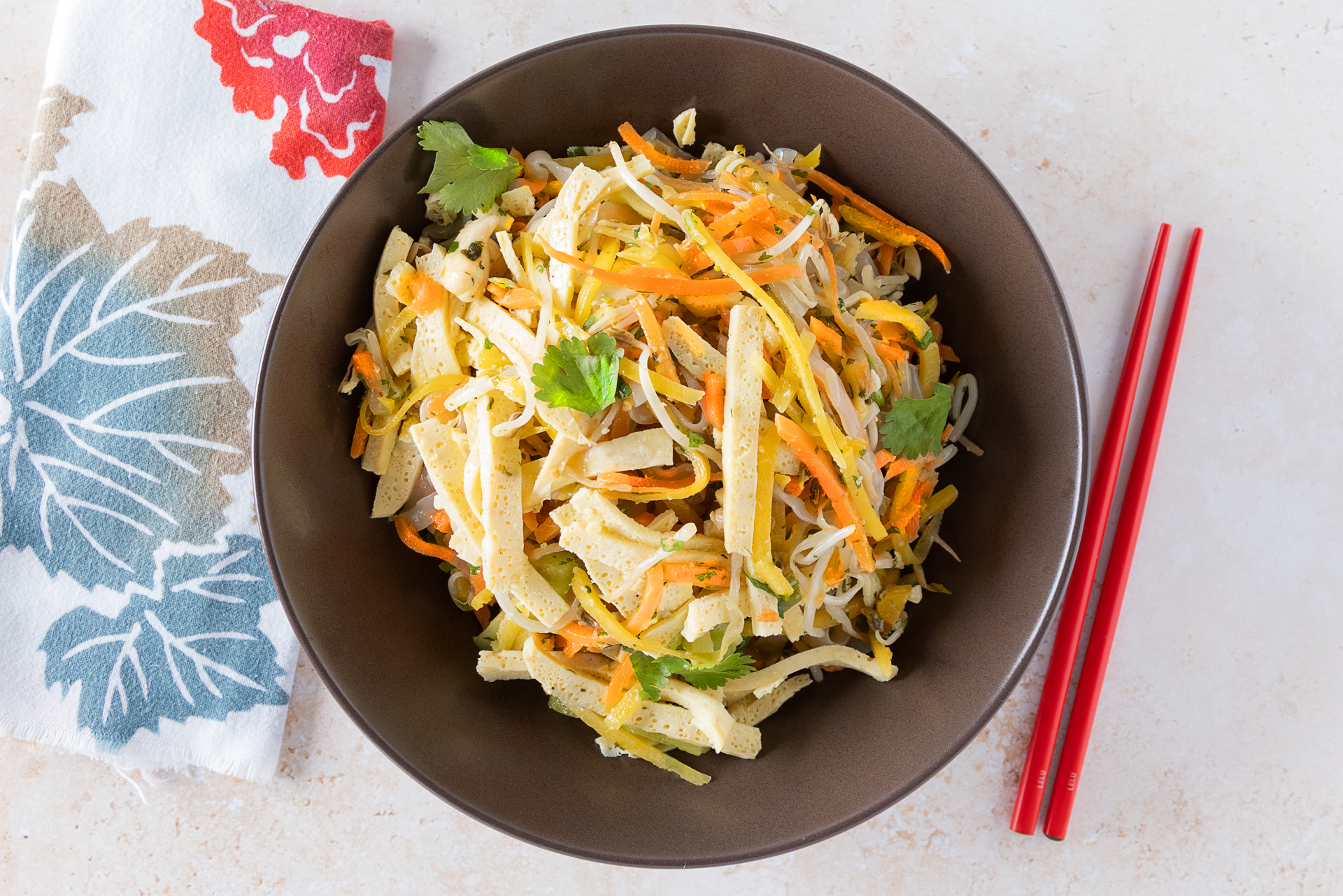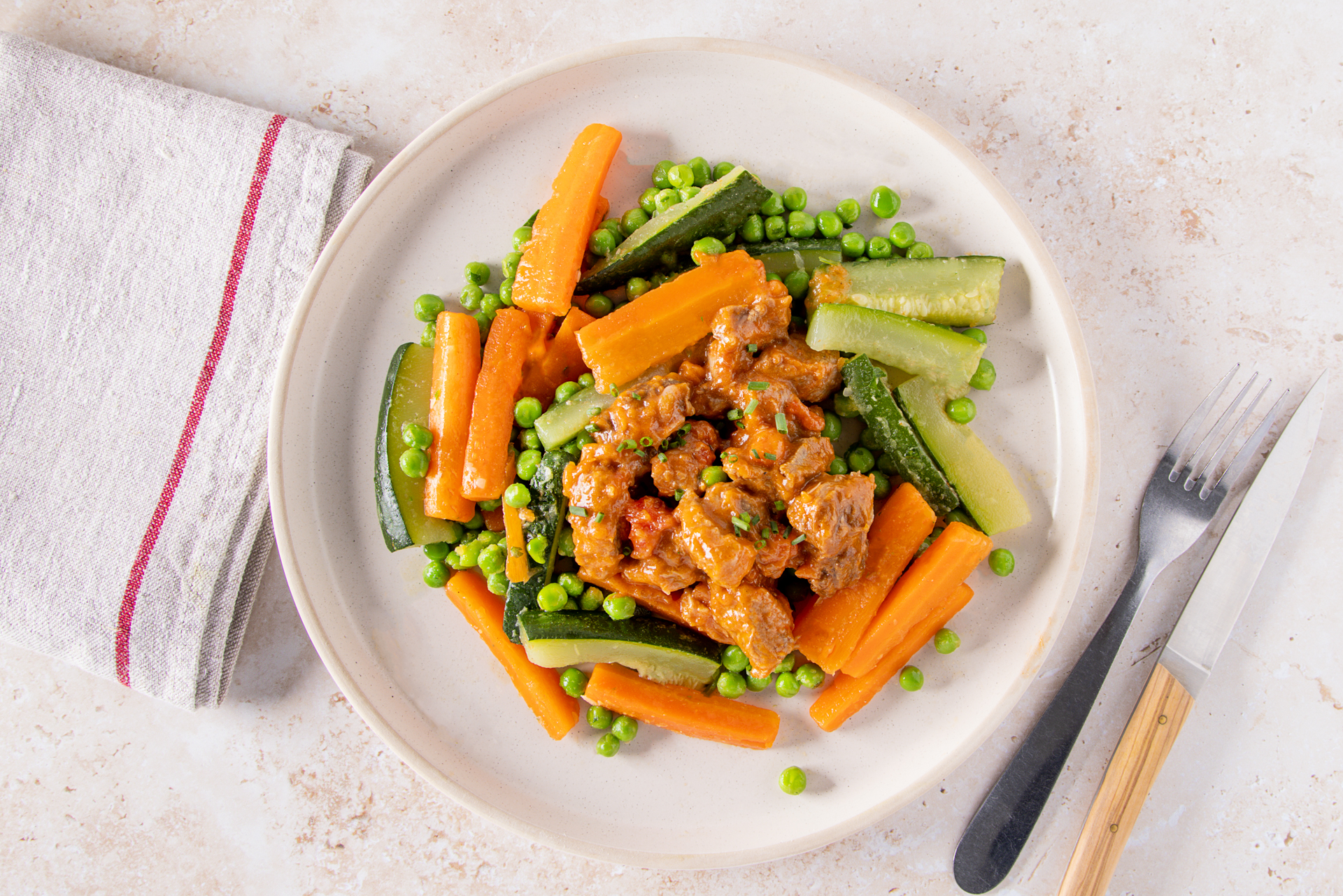Konjac noodle recipes: what are they and how do you use them?

Konjac noodles (also known as "Shirataki Noodles" or "miracle noodles") are a low-carb alternative to replace regular noodles in your favourite recipes. Find out about their nutritional values and how you can start using them.
What are miracle noodles made from?
The noodles are made from konjac, a plant with an edible root, originally grown in Asia. To make the noodles the roots are ground into a highly absorbent powder, mixed with water and sliced into strips. The end result is about 5% konjac root and 95% water, hence the very low calorie count!
What do they taste like?
Similar to regular noodles, Konjac noodles don’t have a very strong flavour of their own, so are always best served with sauce. You will find that the texture is slightly springier than regular noodles but otherwise you shouldn’t notice much difference.
Nutritional qualities
Konjac noodles are high in viscous fiber, and have a very high water content. While they aren’t high in vitamins or protein, they’re a great way to avoid feeing hungry if you’re trying a low-carb diet as they’re quite slow to digest. We recommend mixing them with colourful vegetables to make sure you still get the nutrients you need without adding too many carbs.
In a 100g portion you’ll typically find:
- Dietary fiber ~4.5g
- Fat < 0.5g
- Carbohydrate < 0.5g
- Protein < 0.5g
How to use miracle noodles
If you’ve bought packaged Shirataki noodles the first step is always to rinse them thoroughly as the water they are stored in won’t have the best taste.
They are safe to eat raw but they have a rubbery texture, so we recommend boiling the noodles for 3 minutes to loosen them up. Or, leave them boiling slightly longer if you’ve chosen a noodle with a thicker cut.
Once drained, you can add them straight into a stir fry or ramen dish. You can also let them cool down and add lemon juice, soy sauce and garlic for a refreshing noodle salad.
If you dislike the springy texture, frying the noodles for slightly longer in a stir fry and choosing a thinner cut will remove some of the water and make them feel more like traditional noodles.
Low-calorie noodle recipes
There are many ways to use low-carb noodles, here are some of our favourite recipes:
- Dalk gotchi, Korean Konjac noodle salad
- Char kway teow with shrimp & squid
- Wok Thai chicken stir fry
Can you eat konjac noodles every day?
For most people konjac noodles are safe to eat every day, but you shouldn’t eat konjac exclusively as it doesn’t contain all the vitamins and minerals you need in your diet.
Remember, it’s always about what works for you. Some people find Konjac makes them feel bloatedwhile others find they’re a great way to stay energised throughout the day. If you don’t like konjac, there are plenty of other ways to create low-carb meals.
Are they keto friendly?
Yes, they are commonly used to supplement keto or other low-carb diets as they contain nearly zero carbohydrates.
Where can I buy them?
You can find them in most supermarkets, or order online. If you want to see how they should taste before cooking with them you can also order konjac recipes from Powermeals to try them out.
How do I store them?
Konjac noodles should be kept in water, in a sealed container and can be stored for up to 30 days in a cool dark place.
Get started on a low-carb diet
If you want to try out a low-carb diet but aren’t sure where to start, we can help! Sign up for Powermeals and get 3 to 14 low-carb meals delivered direct to your door each week.


